magicrub的博客
magic rubMillion Dollar Homes Across America 2011
http://finance.yahoo.com/real-estate/article/112748/million-dollar-homes-across-america-cnbc
What will a cool $1 million fetch homebuyers in 2011? How much square footage? How many bedrooms and bathrooms? How big of a yard, if any yard at all? It all depends what city you're buying in, of course.
We checked in with cities across America to find out about their million-dollar dwellings. Real estate agents representing each city supplied representative property in the $1 million range and discussed the state of their market. Further data on city averages was supplied by Zillow.
[Click here to check home equity rates in your area.]
We wanted to know how home sales are doing compared to last year, and especially in the $1 million bracket. Who is buying these $1M homes--are they first-time buyers, people relocating, people upgrading or downsizing? What are the top concerns in these markets?
San Francisco, California
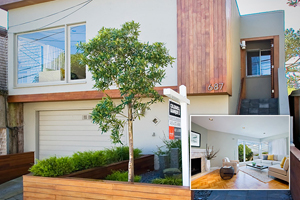 Michelle Payne | Coldwell Banker Residential Brokerage |
Listing price: $1,250,000
Bedrooms: 3
Bathrooms: 2 full
Size of home: 1567 square feet
$1 million+ market
Homes for sale: 2,697
Median size: 3,180
Median time on market: 51 days
In the City by the Bay, property that is priced properly and shows well is selling very quick. Open house attendance is very busy, and many properties are seeing multiple offers. Property that is overpriced, however, is not seeing activity. Buyers continue to be very savvy and informed when coming to the table with an offer.
In the million-dollar price segment, if the property is a good value, with good bones (desired area, light, views, renovated) it moves. It also depends on property type--A two- family home with rental potential in this range is hot real estate. However, investment property, is not selling as quickly, as that is a different buyer audience.
[Click here to buy or sell a home.]
The time homes spend on the market is down from a year ago, though it varies by neighborhood. The biggest issue in the market right now is inventory. There is a demand for good property. The lending environment is solid and there are funds available to purchase. The challenge is that property is moving fast, so there isn't enough inventory for purchasers right now.
Buyers are expressing that the worst, economically, is behind us and they see today's market as the time to secure a great home at a great price. But people have not forgotten those bad times--they still want to get a great deal. So negotiations are ever strong and buyers are coming to the table armed with information: how long the property has been on the market, what the seller paid, they know the comps and everything that is on the market. They want to get to the closing table knowing they've struck a deal.
New York, New York
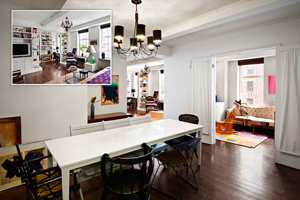 Brett Miles | Town Residential NYC |
Listing price: $1,225,000
Bedrooms: 2
Bathrooms: 2
Size of home/lot: approx. 1000 sqft
$1 million+ market
Homes for sale: 16,803
Median size: 3,308
Median time on market: 63 days
The New York market still moves at a frenetic pace, but buyers are more knowledgeable of the market than ever before. They opt for viewing as many apartments as possible, often in other neighborhoods, just to compare. The New York City buyer is not striking quickly; often circling back weeks later to make an offer after they have really seen all that is out there.
In this city, there is always a demand for the $1 million market, but "I have noticed a huge uptick in the high end in 2011," says Brett Miles of Town Real Estate. "It just seems to be steady in 2011."
Echoing the sentiment stated elsewhere in this slideshow, he notes that if properly priced, a home will stay on the market about three months. If it's priced above what the market is willing to pay, the period on the market becomes 6-8 months with a reduction along the way.
Like other urban markets, New York is lacking product, in this case due to the stophold on new construction since the crash. Developments are starting again, but that still means two years before they start closing. The next few years will be lean on quantity. Buyers are out there and want to spend; they just cannot find the homes they are seeking.
In the NYC market, the $1M buyer is usually first-time buyer, so agents find themselves having to educate them on condo vs co-op, closing costs, and the process from start to finish. Miles points out, "Now more than ever, we really need to make sure they understand what the mortgage process may entail."
Honolulu, Hawaii
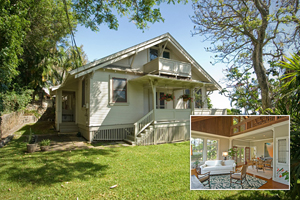 Patti Nakagawa | Coldwell Banker Pacific Properties |
Listing price: $1,085,000
Bedrooms: 4
Bathrooms: 3
Size of home/lot: 2148/7155 square feet
$1 million+ market
Homes for sale: 654
Median size: 2,880 square feet
Median time on market: 61 days
Overall, the real estate market in Honolulu is better than last year. The number of homes sold in January/February this year compared to the same period last year is up 7% for single family homes and up 21% for condos. In the million dollar-plus category of houses, the low number of such homes on the Honolulu market is driving down the time they spend on the market. In particular, the $1 million to $2 million price range is selling quickly. Properties over $2 million are taking approximately three months to sell.
For all single-family homes over $1 million, the average days on market (DOM) is 101 this year, which is nearly three weeks shorter than the average DOM for the same period in 2010 (122 days). Local economists are forecasting a moderate improvement this year compared to last year, and already activity has picked up, especially in the $2 million plus price range.
Honolulu has a mix of local, U.S. mainland and overseas buyers, and the local market, strikes a good balance of first-time homebuyers, move up buyers, and downsizers. The U.S. mainland and international markets are primarily second homebuyers.
Portland, Oregon
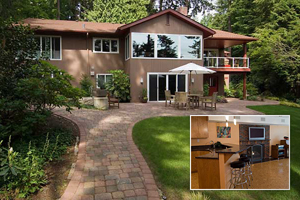 Anya Rosenfeld | Hasson Company Realtors |
Listing price: $1,195,000
Bedrooms: 6
Bathrooms: 4.1
Size of home/lot: 5,771 square feet/ .83 acres
$1 million+ market
Homes for sale: 478
Median size: 4,805 square feet
Median time on market: 71 days
In Portland, 2011 is starting off slower than 2010 did. Anya Rosenfeld of Hasson Company Realtors attributes this to the level of sales activity generated early in 2010 by the first-time homebuyer tax credit. Increased sales statistics parlayed into increased consumer confidence, which affected activity at all price levels. This year there is nothing creating any urgency for buyers to make their purchases, so they are taking their time and homes stay on the market longer.
The length of time to sell a home is directly proportional to the price range; the higher the price, the longer the market time. Exceptions to this trend occur when a home is priced well below the market and viewed as an unbelievable value. This scenario often leads to multiple offers in any price range.
The Portland market has not hit a point of stability, Rosenfeld says, probably due to the increase in the number of short sales and bank-owned properties entering the market. Obviously, there are "micro" markets where inventory is low and demand is still high that buck this overall condition. The real challenge continues to be financing. Appraisals are very often coming in below the agreed-upon purchase price resulting in failed transactions. The practice of using appraisers unfamiliar with the nuances of a given community is quite frankly creating havoc in the marketplace. When there is a willing buyer and willing seller who have agreed upon a fair market price, a low appraisal results in no sale or a reduced purchase price. The overall effect is preventing the market from hitting a stable bottom and beginning recovery.
Buyers are concerned about resale and taxes, and they are increasingly sensitive to and avoiding areas with higher property taxes and extra fees. The overall trend tends to be towards smaller homes in close proximity to shopping, etc. Walking neighborhoods are in high demand.
Phoenix, Arizona
 Bonny Holland | Leading Luxury Experts |
Listing price: $1,249,000
Bedrooms: 5
Bathrooms: 6
Size of home/lot: 5,843/ 39,413
$1 million+ market
Homes for sale: 1996
Median size: 5,425 square feet
Median time on market: 78 days
The Phoenix market saw an overall slowdown in activity but an increase in foreclosures, with 41,000 foreclosures in 2010. Most buyers in the phoenix area right now are move-up buyers or investors. First-time buying has slowed down since the first-time buyer credit is gone.
Bonny Holland of Keller Williams Realty noted, "We closed 26 sales Luxury homes in 2010 with approximately 22% of those being distressed sales. We currently have 27 active properties and 11 under contract with a list price of over $750K. About 30% of the homes under contract are distress sales. Of the 27 currently active about 30% are distress sales."
The most common question buyers are asking in Phoenix these days is "What is this market going to do next, go up or down?" Another is, "Have we hit the bottom?"
Holland says, "Where in past years we saw a steady upward trend in appreciation, we now will settle for leveling. In today's Real Estate market flat is the new up!
St. Louis, Missouri
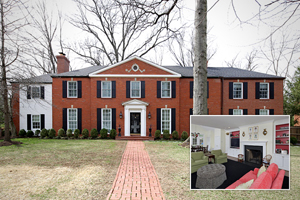 Kathy Beilein | Laura-McCarthy Clayton |
Listing price: $1,150,000
Bedrooms: 4
Bathrooms: 3
Size of home/lot: 4,000 square feet/ approx .5 acre
$1 million+ market
Homes for sale: 472
Median size: 5,003 square feet
Median time on market: 77 days
The St. Louis market is doing all right for itself. According to Kathy Beilein of Laura McCarthy Realtors, combined pending sales and completed sales in the central corridor of St. Louis are up 15% for the first quarter. The $1M plus units are up 65% over first quarter of 2010. The $2M+ plus is double a year ago.
This year to date, homes $1M+ that have closed were on the market 236 days, a number that reduces the cheaper the house's asking price is. While the market has been brisk from middle of February to present, Beilein says there is a lack of supply. St. Louis has something else in common with the other cities: The first-time homebuyer group is far reduced from a year ago, but relocation buyers have increased.
Buyers in this market tend to buy at the top of the range for a home if the location and condition are there. If not, they want the home at the lower end of the range. Although value is always important, it has become a larger part of the decision process.




